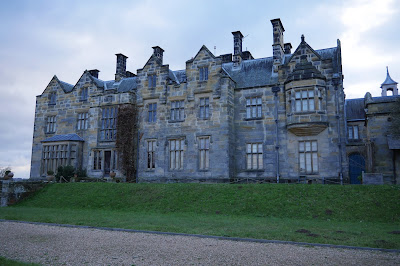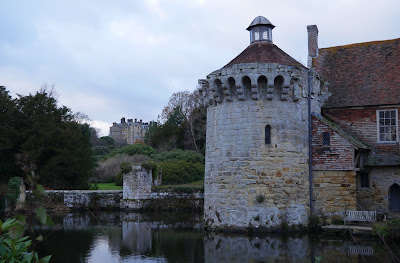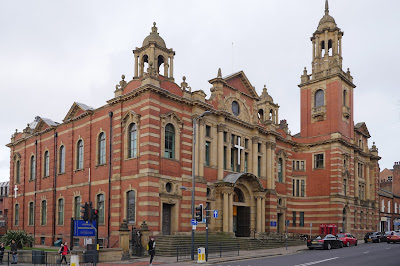Wimborne Minster
Our friends Dave and Chris are visiting and we thought we would show them Wimborne. We were lucky enough to discover the existence of a Town Trail - only available from the Tourist Office in the High St, opposite the Minster. We started our walk with a visit to the Minster. One of its distinctions is that it has two towers: a later one at the west end and the 12th century one over the crossing which can be seen in the photo above. There was a spire as well until 1600 when it fell to the ground.
The famous Chain Library was closed, but we enjoyed the Astronomical Clock, which dates from 1320. It sits in the West Tower
From the west end there is a great view along the nave with its fantastic Norman arches.
This is the view of the ceiling of the Crossing Tower. I took the same picture when we did a circular walk around
Wimborne in 2011, but this one is better.
Following the Trail, we crossed the churchyard to enter the Cornmarket. Markets have been held here since 1224. This is the Market House of 1758, built on the site of the old Guildhall.
We retraced our steps to go round to the other side of the Minster, where I confess we weren't tempted by the Wimborne Model Town, a replica of Wimborne in the 1950s. It was shut anyway. We were however delighted to be taken past the Old Grammar School, rebuilt in a rather lovely Tudor style in 1851. It is now private apartments.
We doubled back into King St and turned right, turning into Dean's Court where our guide pointed out a car park where there were once almshouses (built 1560, demolished on their 400th anniversary in 1960). It's a sad tale. At the end of the road is Dean's Court, "an attractive mansion set in secluded grounds", but almost entirely invisible. The garden can be visited on certain days, so we will have to look out for that if only to see the long crinkle-crankle (serpentine) wall mentioned in the guide.
We again returned to King St and turned into East St, crossing this rather nice bridge.
We doubled back again and walked up the High St to emerge in The Square. It is a fine space, but it is a shame that it is mostly road.
We walked up East Borough and left into Priors Walk with Allendale House (1823 by Sir Jeffry Wyatville)) on the opposite corner.
At the end we resisted another detour - this time to see where the workhouse was once located (it was demolished in 1958). As with the car park that was once almshouses mentioned earlier, I find it hard to see the point. We had a similar experience doing the Jane Austen walk around Southampton - it was full of places, now demolished, where Jane once had coffee or whatever.
We turned into West Borough to see the somewhat unprepossessing Tivoli Theatre on the right. We will come back though as it apparently has a fine art deco interior and definitely has an interesting programme of gigs.
At the end of West Borough we headed towards the Cornmarket again and the end of the walk.
To complete our fun we headed out of town to Badbury Rings. This iron age hill fort is unusual in having a large clump of trees in the middle of it so that its full extent is not immediately apparent. It consists of three concentric circular ramparts with ditches between them, some 18m deep. It dates from around 800 BC and was in use until the Roman occupation of 43 AD
This is the view looking outwards from the grove of trees.
We left by a gate at the rear of the hill fort and followed a track along the edge of High Wood and then walked along the side of the wood to join King Down Drive, a wide and pleasant country lane.
A right turn brought us to the Blandford Road which we followed for a mile or so beside the famous avenue of beech trees. They looked lovely in the late afternoon sun
Conditions: bright and not too cold.
Distance: perhaps a mile and half around Wimborne and 3 miles around Badbury Rings.
Map: Explorer 118 (Shaftesbury and Cranbourne Chase).
Rating: four stars.



















































